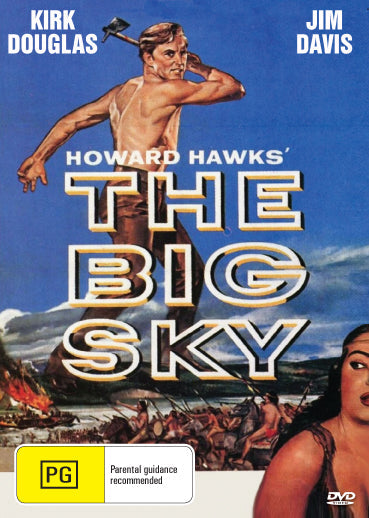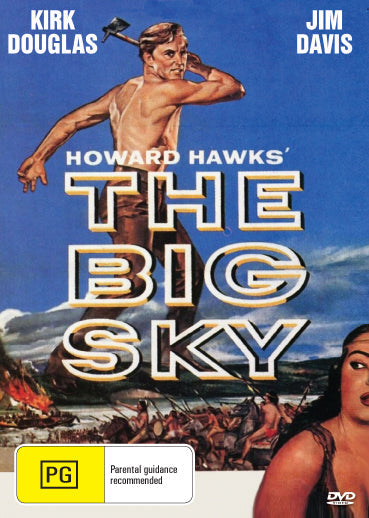rareandcollectibledvds
The Big Sky
The Big Sky
 Before you ORDER please check do you wish to order a DVD or a Digital Download file
Before you ORDER please check do you wish to order a DVD or a Digital Download fileFor DVD use the GET DVD Button
For a Digital Download use the DOWNLOAD Button
Couldn't load pickup availability
Jim Deakins is a frontiersman and Indian trader who is making a perilous journey with a group of other men up the Missouri River to get a large haul of furs from friendly Blackfoot Indians. The problem is that they have to get through hostile Indian territory first and they find that they have seriously underestimated the difficulties they will undergo. The large body of men who started the journey are gradually whittled down until only a hardy few, like Deakins, are left. Mighty drama of the adventure that battered down the barriers to the great Northwest!
STARS: Kirk Douglas, Dewey Martin, Elizabeth Threatt
140 min | Adventure, Drama, Western, Classical Western | 1952 | Color
Movies with low demand and/or out of print are manufactured-to-order using high quality recordable DVDs. Please read FAQs if unsure, or send a query.
All DVDs are Region 0 and are guaranteed to play on any DVD player in any country in the world
Satisfaction Guarantee – if you are not satisfied with any aspect of your purchase then we will explore all options to rectify the issue
COMBINED POSTAGE: ONLY CHARGED FOR THE FIRST DVD ALL OTHERS IN A MULTIPLE ORDER ARE POST FREE
Postage: Free In Australia.
Postage: Rest Of The World at Table Rate
All DVDs come in a DVD case with color artwork and printed disc
All DVDs are available as an MPEG4 file sent to you via an email link. Save on postage and waiting time. Transfer can take up to 12 hours depending on the time zone you are in.
A Great Adventure Film
“The Big Sky” is one of the most unique and entertaining adventure films ever made. Set in the American frontier of the early 1800s, it’s the story of an ambitious party who pole their keel boat up the Missouri River into new territories, far beyond where other white men have ventured, to trade for furs with the Blackfeet Indians. “The Big Sky” was filmed on location, and this alone makes the film worth watching, for the splenor of the Snake River and Grand Tetons, where the film was actually shot, is breathtaking. But “The Big Sky” has other virtues which raise it far above the average “scenic”. First, is the multi-layered plot. Besides the story of an enterprise, “The Big Sky” is about how men, in a time long past, interacted, when their differences were subordinated to a higher purpose. Second, is director Howard Hawks, whose trademark “naturalistic dialogue” technique is put to wonderful use here. Hawks works on complex relationships – male and female, “Frenchie” and Anglo backwoodsmen, Native Americans and whites – like a conductor a symphony. Third, and perhaps most touching, is the tale of male bonding not only among the group of men, but one-on-one between Jim Deakins, played by Kirk Douglas, and Boone, his young sidekick, played by Hawks protegé Dewey Martin. There’s a nice, touching story toward the end. This is a shamefully underrated film. Superb cinematography (Oscar nominated), rich plot, flawless casting (Arthur Hunnicutt nominated for Best Supporting Oscar), masterful direction, make “The Big Sky” a true classic.


